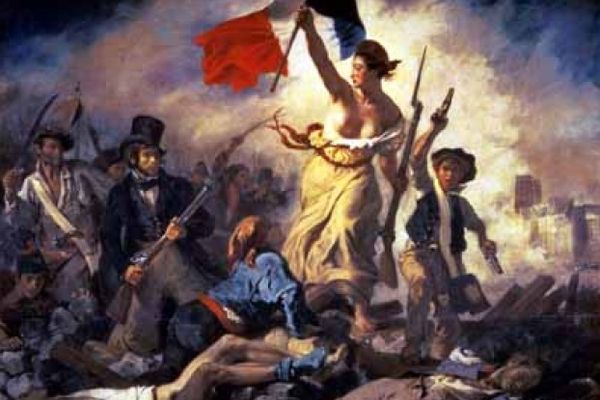
Key Takeaways
- The women-led march on Versailles in 1789 was a turning point in French history.
- The march was triggered by economic hardships and lavish lifestyle of Louis XVI and Marie Antoinette at Versailles.
- Protesters demanded release of grain stores.
In January 2017, women from across the United States took part in a march to advocate for human and women's rights. While it was certainly a vocal way to express frustration with the political climate, there is a historical precedent for such an event.
On an episode of Stuff You Missed in History Class, hosts Holly Frey and Tracy V. Wilson walk us through the Women's March on Versailles, a turning point in French history.
Advertisement
But before we get to the march, let's talk a little about Versailles and the crisis that fomented the protest. Versailles, 12 miles (19 kilometers) from Paris, was practically its own town. It was an opulent palace with extensive grounds, many buildings and 60,000 people living or employed there in the late 18th century. Its splendor contrasted starkly with the lives of French commoners in 1789, when the march took place.
Because while Louis XVI and his wife Marie Antoinette were having a ball at Versailles, there were serious economic problems in France. The population had grown by 8 million people in eight decades, and agriculture hadn't caught up. There were a few terrible years for crop harvests, and French officials had also attempted to deregulate grain trade — much to the chagrin of farmers and other French citizens. By 1789, typical French laborers were spending 70 to 90 percent of their wages on bread, as opposed to about half of their wages earlier in the century.
So on Oct. 1, when word got out that a huge party with tons of food had been thrown at Versailles, nonaristocratic French folk were not thrilled. "Though they were overblown reports, they still garnered the ire of public," says Holly. "For one, guests of Versailles were badmouthing the revolution which was just in its infancy ... For another, these men were being treated to a massive feast when many of France's people were going hungry."
Adding to the anger was the fact that there was still a massive bread shortage despite a better harvest year, which made people suspicious. "People started to gossip that the shortage was purposely being arranged by government to weaken the populace and make them more submissive," says Tracy.
So on Oct. 5, an estimated 5,000-10,000 people — mostly women — met up in Paris to demand the palace's grain stores be released. From there, they walked the 12 miles to Versailles, and gained thousands more followers as they went.
Hear Tracy and Holly recount the dramatic events and aftermath of the march and protest on this episode of Stuff You Missed in History Class.
FAQs
Were there any specific leaders or organizers of the Women's March on Versailles?
While there were no official leaders, women from various backgrounds came together to demand the release of grain stores at Versailles.
What were the long-term effects of the Women's March on Versailles?
The Women's March on Versailles played a significant role in escalating the French Revolution and highlighting the economic disparities and hardships faced by the French population.
Advertisement

